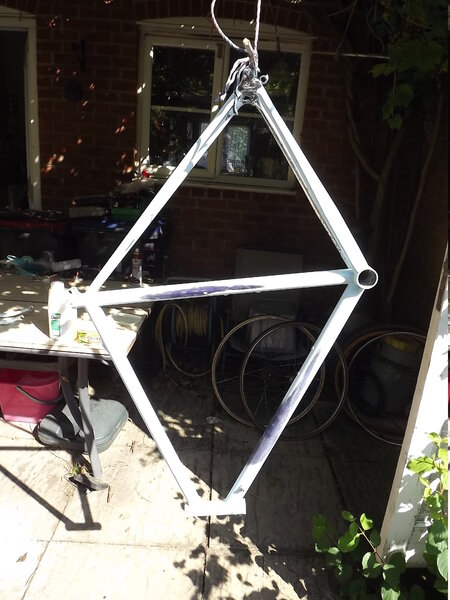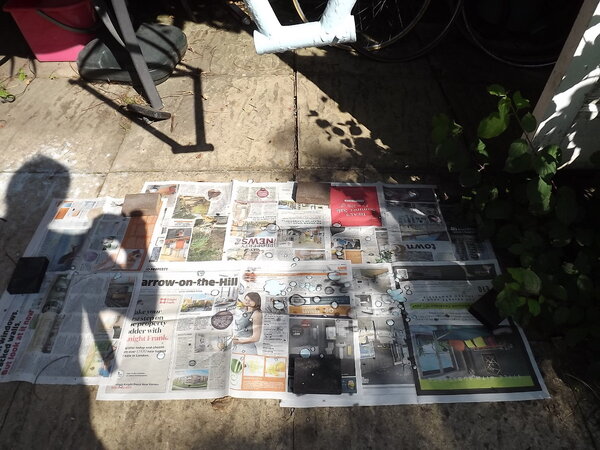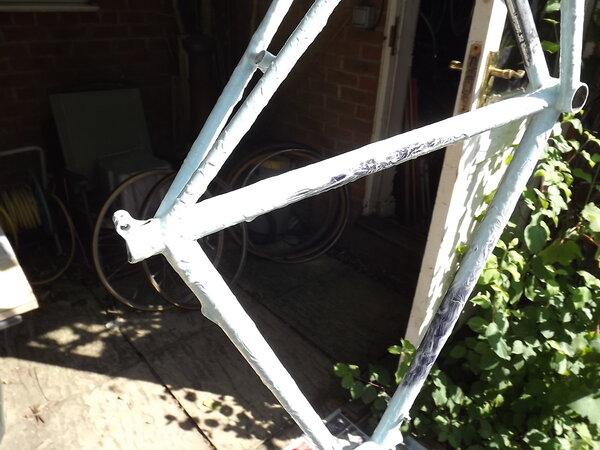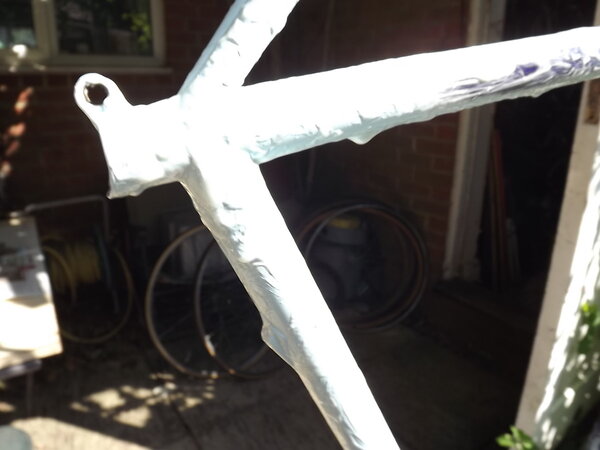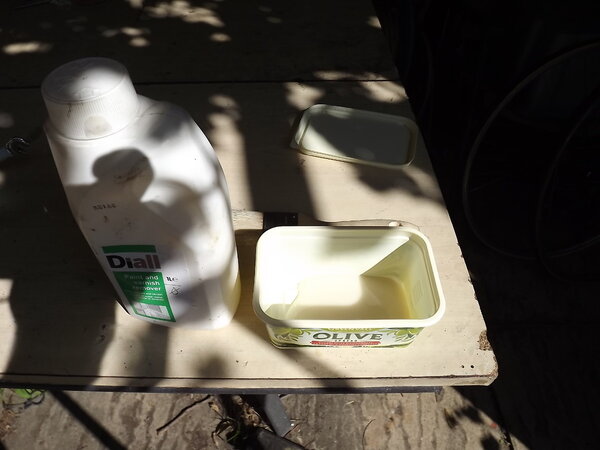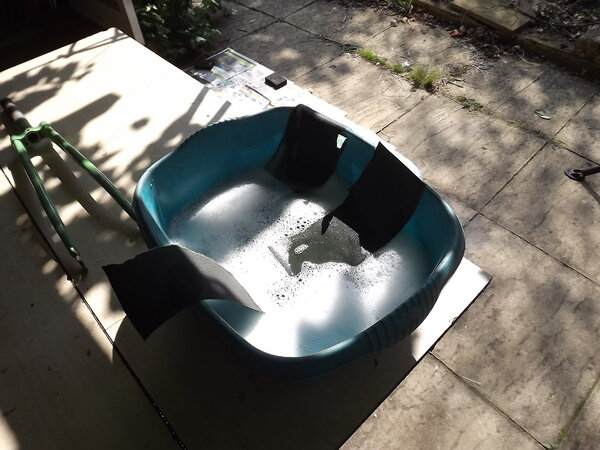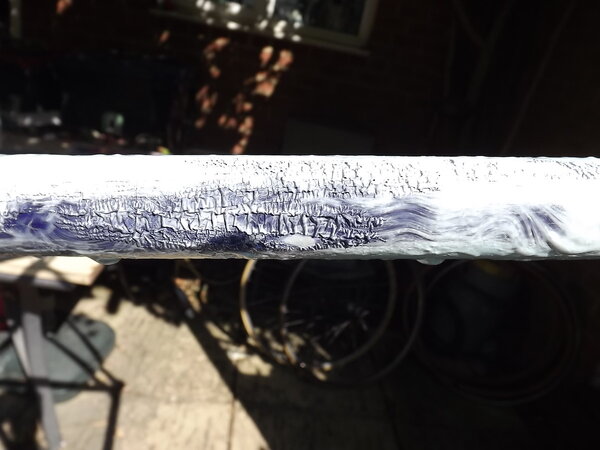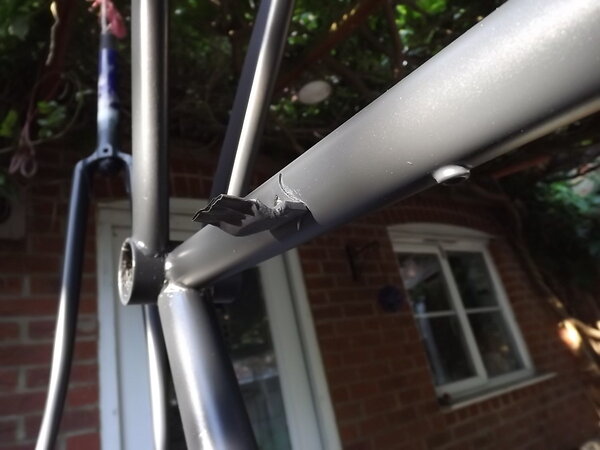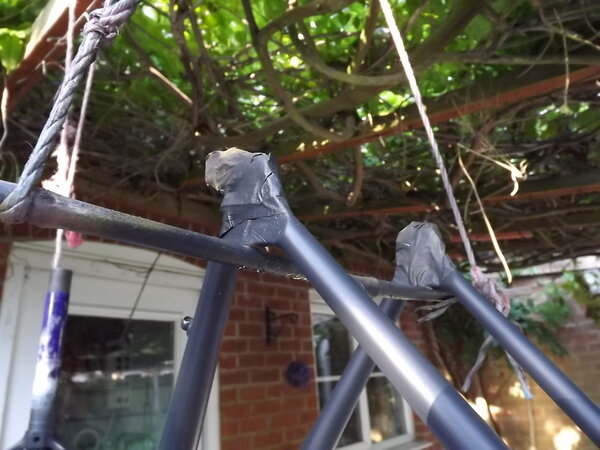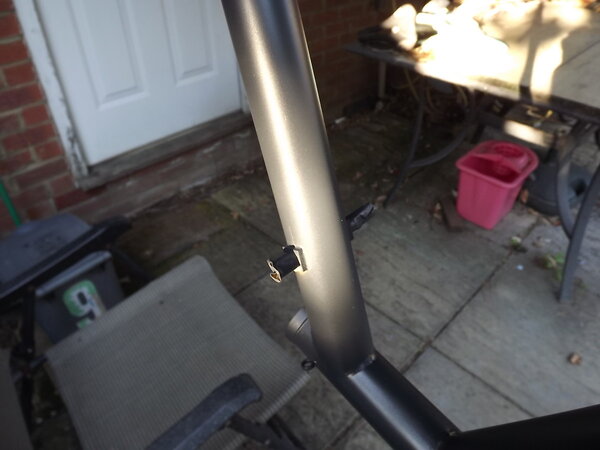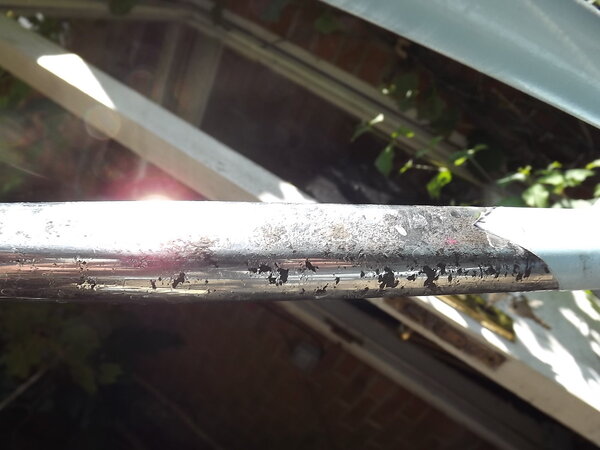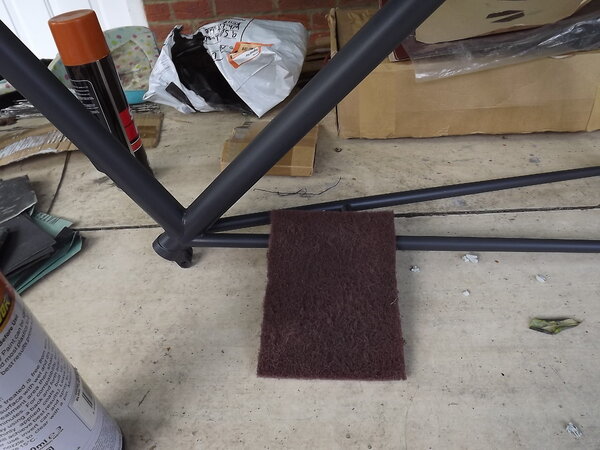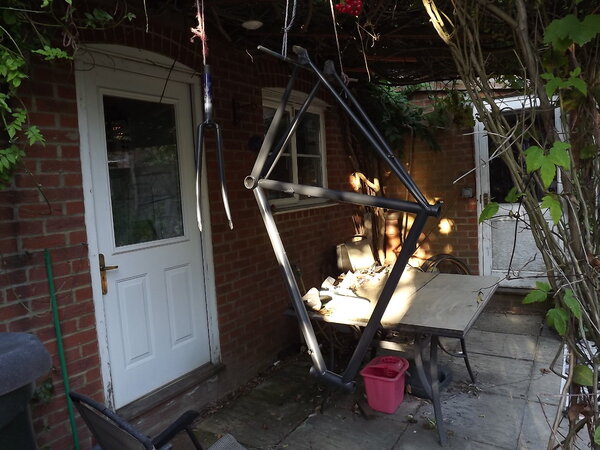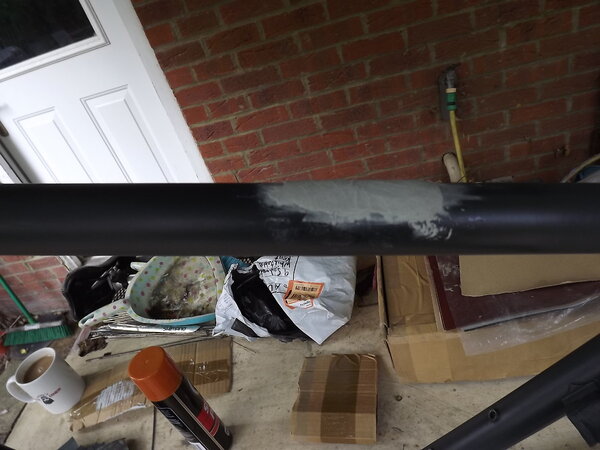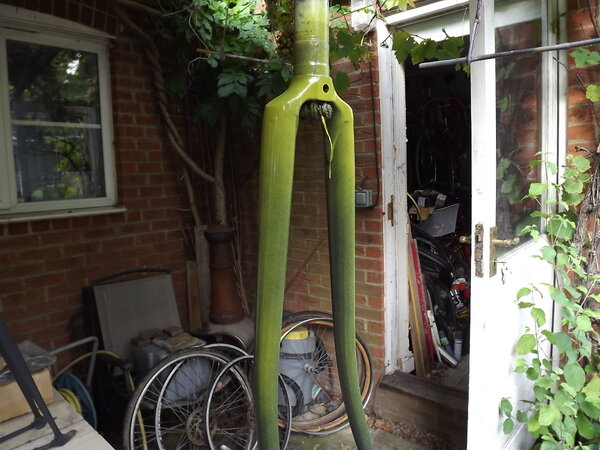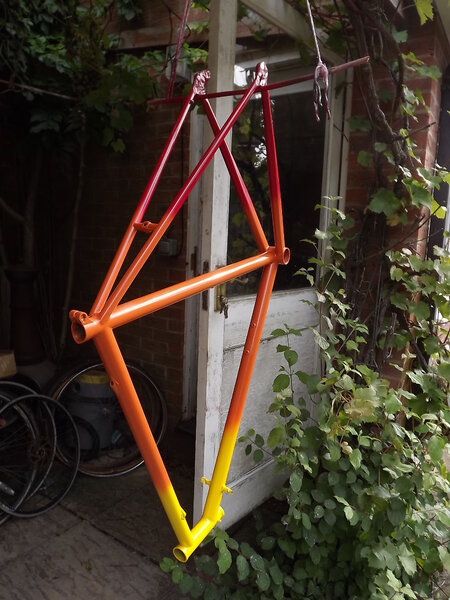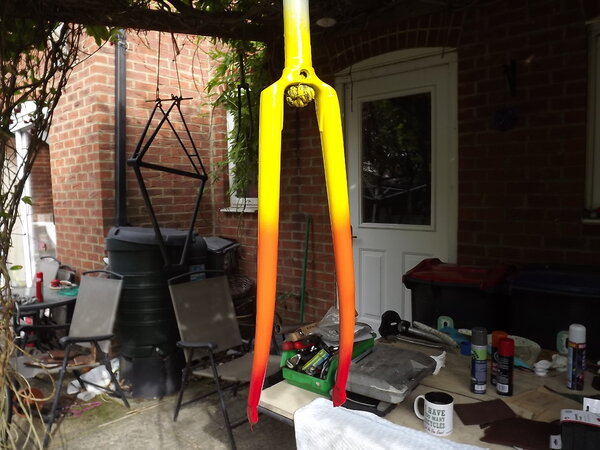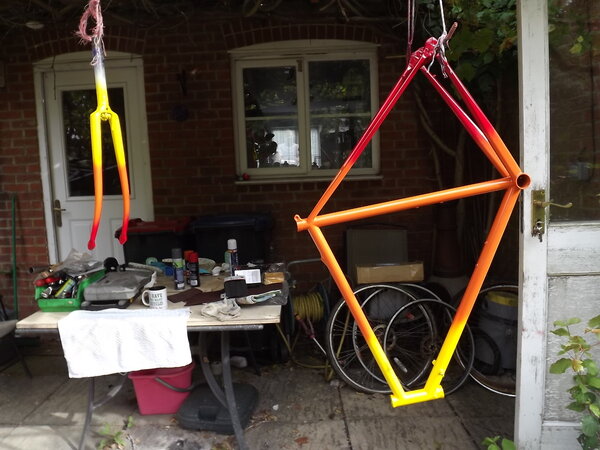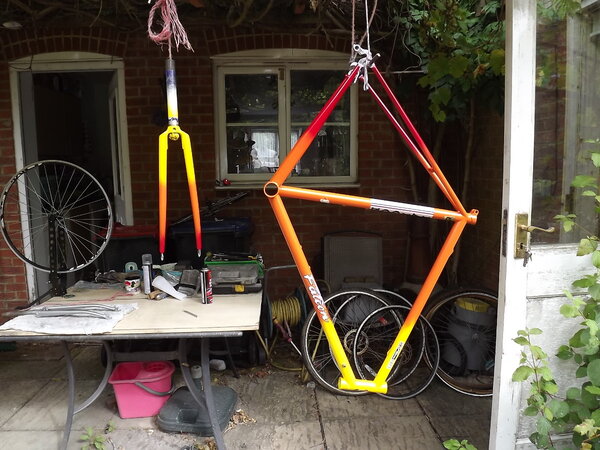Ok as I paint my own frames with rattle cans I was asked to do a thread on painting them so here goes.
Apologies up front for the lack of pictures or any details I miss as the weather is not as good as it was so I've had to take the painting opportunities while I could which doesn't always give time for enough step by step photo's. Also I’m doing two frames together at the moment and the 2nd might form the basis of Paint Your Wagon Part Deux as it does have different issues to consider.
This guide is meant as a help to those fancying a go at it but please only take it as that because I’m no professional and the following are some thoughts and pointers on what I’ve found works for me, they are by no means a thorough reference and I’m sure others can chime in with more advice or suggestions where they have better ways of doing things.
I’m not the greatest teacher so if you feel I’ve left info or steps out please ask and I will try to help, and conversely if you feel I’m trying to teach your granny to suck eggs then apologies but wind your neck in as not all of the class is up to your meteoric standards.
I've selected my unknown modernish frame that's scruffily painted and has other issues like a dent and some corrosion.
Here is the frame where it's had a bit of rub down to find the original colour and to see if there were any decal ghosts on it to identify it, and no there was nothing there so its a blank canvas really and ready to be worked on.
So on to the next step which is what to do with the finish that's on there now.
Apologies up front for the lack of pictures or any details I miss as the weather is not as good as it was so I've had to take the painting opportunities while I could which doesn't always give time for enough step by step photo's. Also I’m doing two frames together at the moment and the 2nd might form the basis of Paint Your Wagon Part Deux as it does have different issues to consider.
This guide is meant as a help to those fancying a go at it but please only take it as that because I’m no professional and the following are some thoughts and pointers on what I’ve found works for me, they are by no means a thorough reference and I’m sure others can chime in with more advice or suggestions where they have better ways of doing things.
I’m not the greatest teacher so if you feel I’ve left info or steps out please ask and I will try to help, and conversely if you feel I’m trying to teach your granny to suck eggs then apologies but wind your neck in as not all of the class is up to your meteoric standards.
I've selected my unknown modernish frame that's scruffily painted and has other issues like a dent and some corrosion.
Here is the frame where it's had a bit of rub down to find the original colour and to see if there were any decal ghosts on it to identify it, and no there was nothing there so its a blank canvas really and ready to be worked on.
So on to the next step which is what to do with the finish that's on there now.
